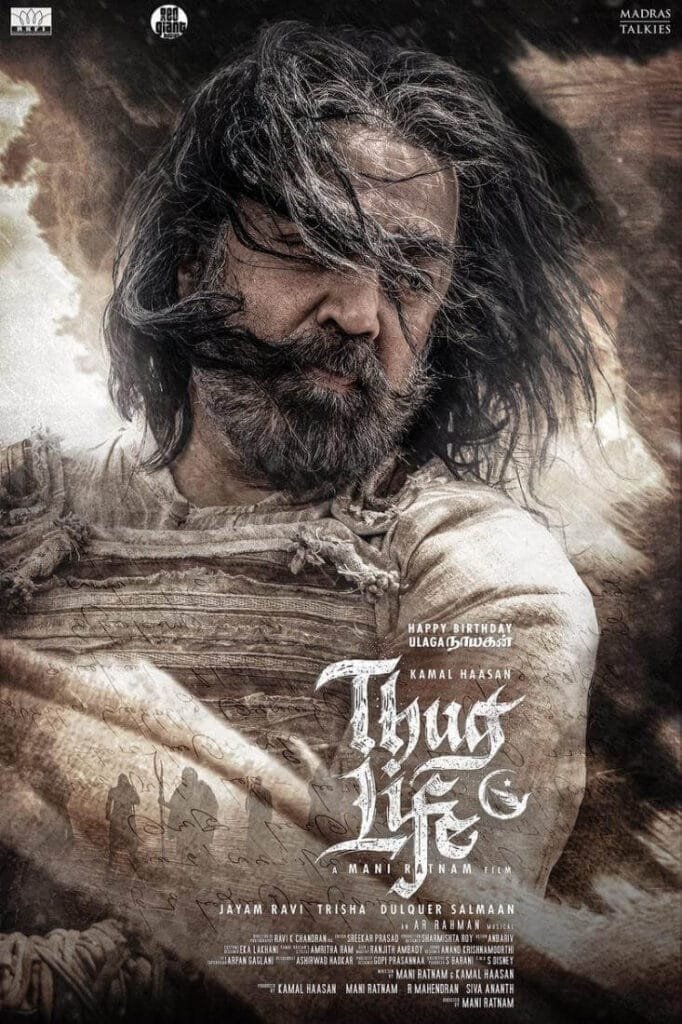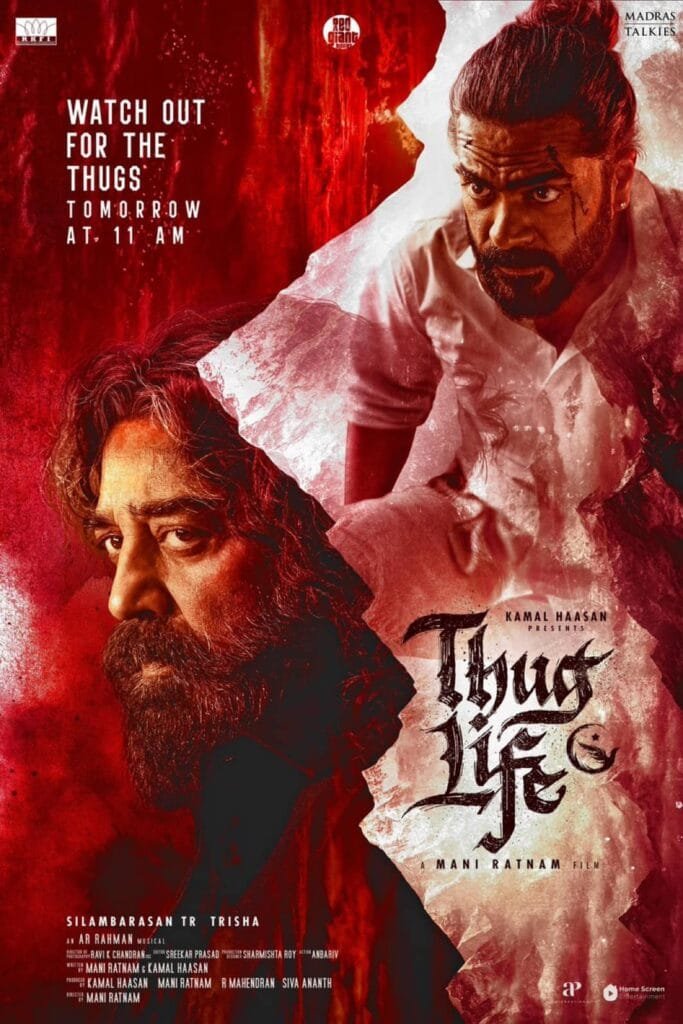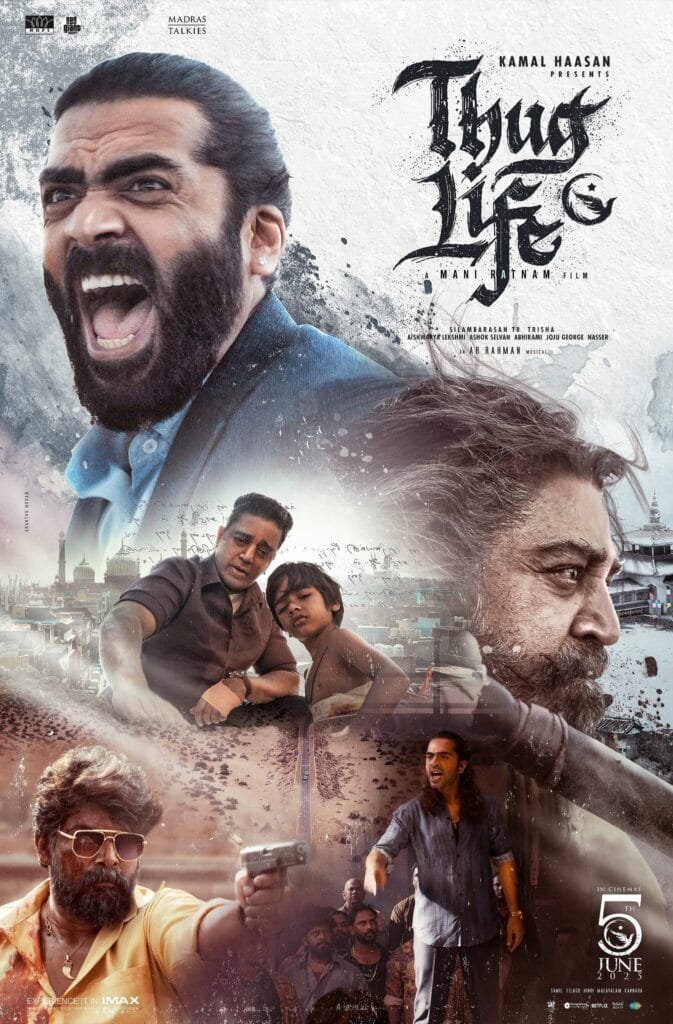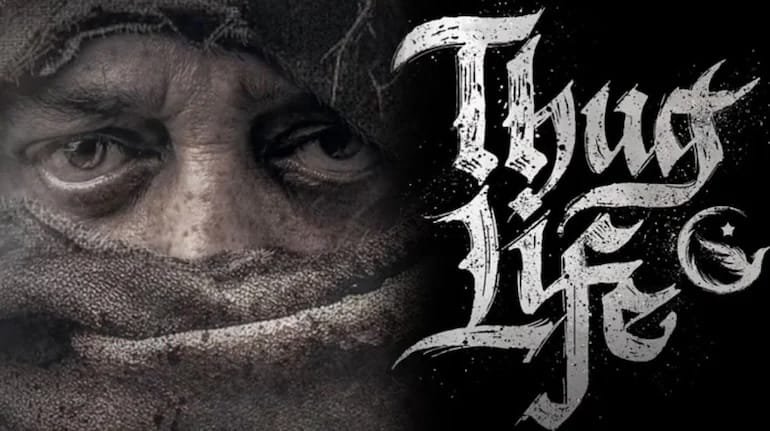Three decades after their groundbreaking collaboration on Nayakan, Mani Ratnam and Kamal Haasan reunite for Thug Life, an ambitious attempt to explore the eternal conflict between morality and power. Unlike Nayakan, where Kamal’s character embodied a singular duality, this time, the contrast extends to Amaran, portrayed by Silambarasan TR. Ratnam, who has previously examined dualism in Iruvar and Raavanan, struggles to provide clarity here. The moral ambiguity surrounding its central characters leaves viewers without a firm resolution, making Thug Life an uneven and often disengaging experience. Despite sky-high expectations, the film ultimately fails to deliver a compelling narrative.

Direction
Mani Ratnam’s unmistakable visual grandeur is present but infrequent, leaving Thug Life unable to rise above its fragmented storytelling. The film opens with a stylized sequence hinting at profound themes of survival and fate, but this promise fizzles out quickly. Ratnam attempts to weave deeper psychological elements—including the Oedipus Complex and intertwined destinies—but these ideas remain underdeveloped. The film relies heavily on dialogue rather than allowing relationships and character arcs to evolve naturally, leading to a disconnect between the audience and the characters. This lack of emotional depth makes engagement difficult.

Performances
Kamal Haasan, portraying Sakthivel, occasionally feels misaligned with the film’s tone, oscillating between theatrical flourishes and moments of uncertainty. Silambarasan TR, in contrast, brings palpable intensity as Amaran, yet even his performance is limited by shallow writing. Other cast members—Joju George, Trisha Krishnan, Abhirami, and Nasser—are given minimal character depth, preventing them from making a strong impact. Rajshri Deshpande, despite brief screen time, manages to leave a lasting impression. The film’s attempt to establish a meaningful bond between Sakthivel and Amaran falters due to superficial characterization and an over-reliance on weighty dialogue rather than organic interactions.

Technical Merits
Ravi K Chandran’s cinematography is one of the film’s highlights, capturing vivid cityscapes and atmospheric depth with rich texture. However, even his artistry cannot mask the film’s narrative shortcomings. Sreekar Prasad’s editing, though polished, struggles against disjointed storytelling. Anbariv’s action choreography lacks impact, failing to inject the dynamism needed for a film of this scale. While the film strives for grandeur in its visual elements, the absence of a compelling story undercuts its effectiveness.

Music & Sound Design
AR Rahman’s score, a crucial element in most Mani Ratnam films, surprisingly misfires in Thug Life. The background score often feels misplaced, at times making the film resemble a parody of the gangster genre rather than a serious drama. Vinveli Nayaga, while a strong standalone track, suffers from its erratic placements within the narrative, disrupting the film’s flow instead of enhancing it. Rahman’s experimental choices, rather than elevating the emotional tone, create unintended discord.
Music Link: https://www.youtube.com/watch?v=fCAZZrDsOP0
Overall
Despite the formidable collaboration of Mani Ratnam and Kamal Haasan, Thug Life remains an inconsistent and often frustrating cinematic experience. While it attempts to explore themes of duality, loyalty, and succession within the criminal underworld, its weak character development and uneven pacing prevent it from achieving narrative depth. Though Ravi K Chandran’s visuals offer fleeting brilliance, they alone cannot compensate for the film’s fundamental storytelling flaws. Ultimately, Thug Life feels more like a puzzle with missing pieces—requiring repeated viewings to grasp its intentions—rather than the definitive return to form expected from such an iconic pairing.
Trailer Link: https://www.youtube.com/watch?v=96kAbj3IF3k
